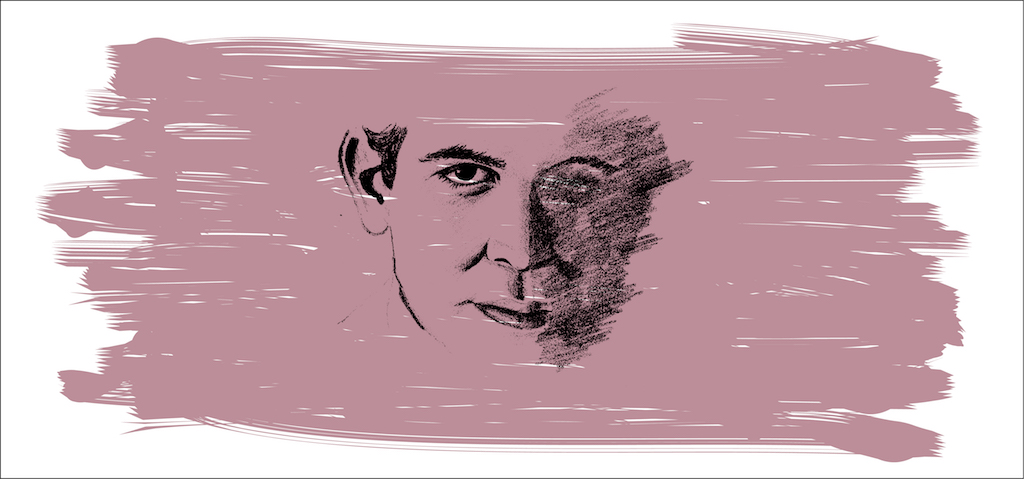On February 15, Cinema Politica Concordia and Concordia University Community Lecture Series on HIV/AIDS partnered to screen Cecilia Aldarondo’s documentary Memories of a Penitent Heart. The movie stems from Aldarondo’s questions about the way her late uncle, Miguel, was talked about in her family. Noticing the underlying contradictory emotions conveyed in the bits and pieces she learnt about his life, Aldarondo realized that there was more to his untimely death than a battle with cancer. Her exploration of Miguel’s life—and death—in Memories of a Penitent Heart unearths unresolved grief, complicating our understandings of family, queerness, and faith. While the film is in part about queerness in 1970s and 1980s New York, it is mainly about how we remember and hold on to the lives of the dead.
“Everyone wanted to leave—everyone wishing they’d stayed.”
Aldarondo explores the two identities of her uncle: Miguel and Michael. Miguel grew up in a strictly Catholic household in Puerto Rico, while Michael—the name he adopted in New York City—was a lover of theatre, an actor, and a frequent partier. Michael lived with his partner, a man named Aquin, and lived his queerness muted by his Catholic upbringing. When he developed AIDS, Miguel’s conflicting identities converged; his health condition meant that his family and Aquin came into direct contact in ways that had been previously avoided. Miguel’s mother, Carmen, saw his sexuality as sinful and tried to push Aquin out, while Aquin felt strongly about remaining close to his partner of twelve years through his illness. Carmen and Aquin, and thus Miguel’s two identities, were at odds, and irreconcilable.
Not only did this duality exist in terms of Miguel’s identity; it also existed in terms of his sense of belonging. He found a community of friends who became his chosen family in New York, while remaining tied to—and in love with—his birth family. Similarly, Aldarondo says that, often, Puerto Ricans want to leave the island, but once they do, they wish they had stayed. As much as we may think we are mobile—that we are free to pick up, leave, and reinvent ourselves—Aldarondo seems to argue that we are messily tied to our places of origin.
“She didn’t hate him.”
“They hated me.”
Aldarondo’s film exposed the contradictions in the narratives of those who survived Miguel. Nylda, Aldarondo’s mother and Miguel’s sister, says that her mother, Carmen, did not hate Aquin. Nylda’s casual interview cuts to Aquin, where he says “they hated me.” Like Aldarondo, the viewer does not know what to make of this. Nylda presents a soft and forgiving image of Carmen, while Aquin describes her as resentful and hateful. Nylda apologises for her absence during her brother’s treatment, time and time again. Nevertheless, Aquin’s testimonies and letters from Miguel himself reveal that Nylda seemingly made a conscious decision to turn away from her little brother. Nylda and Aquin later come together, nominally making peace, but both feel that this resolution did little to change how they felt about each other or Miguel. By the end of the film, Aldarondo realizes that she had come to see her film as a way of providing justice for her late uncle, and has been making the film through her own rectifying lens. She explores how different people can perceive the same situation in radically different ways; she examines the messiness of human interactions, aggravated by death and grief.
“Who are you to bring this up now?”
When asked about rumours that Jorge Dieppe (Aldarondo’s grandfather; Miguel’s father) was gay himself, a close friend of Carmen Dieppe, incredulous, berates Aldarondo: she asks, “who are you to bring this up now?” Through this film, Aldarondo publicly airs her family’s dirty laundry. While Aldarondo is not particularly concerned with her family’s reputation in Puerto Rico, she does concern herself with the task of remembering a loved one. The viewer follows Aldarondo’s own process of discovering the pain that had been suppressed since her uncle’s death throughout the documentary. A quiet scene, showing hands spreading a quilt Carmen made for Miguel when he was sick, gives viewers a moment to pause and feel the weight of Miguel’s death.
“Miguel did whatever he needed to do to die in peace.”
According to his mother, Miguel repented before he died. Aquin repeatedly scoffs at mentions of his penitence, but Nylda tells her daughter that “Miguel did whatever he needed to do to die in peace.” Miguel is dead; he is the one person Aldarondo “could not interview.” We cannot know what he did, thought, or felt at the end of his life, but this incompleteness is what makes the film thought provoking.
Aldarondo did not include footage of herself in her first-person documentaries, but her voice was omnipresent; we saw her uncle’s complicated story unfold through the camera acting as her eyes. This technique drew viewers in and invited them to feel the complex emotions that accompanied her discoveries while putting together the film.
I was drawn to the screening in part by a desire to learn more about the HIV/AIDS crisis, but I found myself moved by the film’s exploration of an individual life. Miguel died at the height of the AIDS crisis, and while it is important to discuss the political aspects of the AIDS crisis—the state’s shameful response, the activists and activism that pushed back—Aldarondo is concerned with exploring the gravity of the life and death of one man. The story of Miguel is as reflective of AIDS’ millions of victims as it remains his own unique story. He doesn’t have to be reduced to a victim for his story to be powerfully emotive.
The film was screened on February 15 as part of Concordia University’s Lecture Series on HIV/AIDS.

